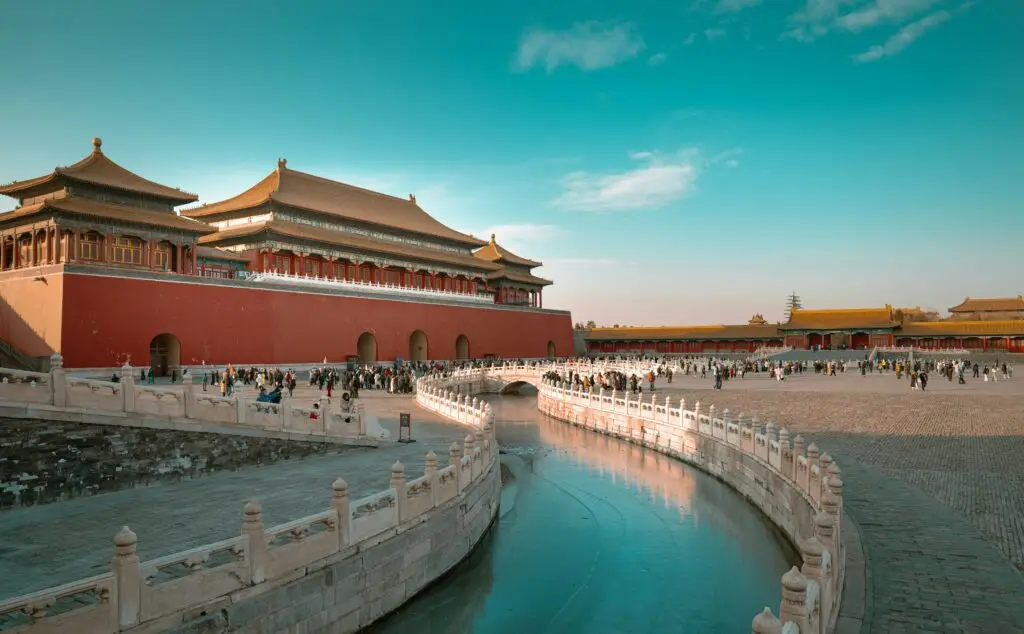Chinese Food & Cuisine
To travel in China is to eat your way through history, geography, and culture. Food here is never just about filling the stomach; it is about community, symbolism, and identity. With over 5,000 years of culinary tradition and a landscape so vast that each region has its own flavors, Chinese cuisine is one of the most diverse and influential in the world.
In China, meals are about sharing. Dishes are placed in the center of the table, encouraging conversation and connection. Food carries meaning, too: dumplings shaped like ancient coins symbolize wealth, noodles represent long life, and fish is served during festivals as a wish for abundance (yu, “fish,” sounds like “surplus” in Mandarin). To join a Chinese meal is to join a cultural ritual where every flavor tells a story.
Chinese food is often described through its “Eight Great Cuisines,” each representing a different region and culinary tradition. Travelers will quickly notice how dramatically flavors shift across provinces.
Sichuan Cuisine (Chuan Cai)
Famous for its bold use of chili, garlic, and the numbing Sichuan peppercorn. Dishes like mapo tofu and hotpot are fiery yet layered with complexity. Don’t be afraid of the spice — the flavors dance between heat, fragrance, and a surprising touch of sweetness.
Where to try: Chengdu’s teahouses and hotpot restaurants.Cantonese Cuisine (Yue Cai)
Known for light, fresh flavors and delicate cooking techniques. Dim sum — small plates like dumplings, buns, and rice rolls — is a highlight. Cantonese food emphasizes freshness, often with seafood and seasonal vegetables.
Where to try: Guangzhou for authentic dim sum, or Hong Kong for a modern twist.Shandong Cuisine (Lu Cai)
Rooted in northern traditions, Shandong cuisine is hearty, with a focus on seafood and soups. Expect bold flavors, often salty and savory. Braised abalone and sweet-and-sour carp are signature dishes.Jiangsu Cuisine (Su Cai)
Elegant and refined, often featuring fresh fish, crab, and river delicacies. Famous for dishes with rich yet subtle flavors, such as lion’s head meatballs. Its presentation is often as beautiful as its taste.Zhejiang Cuisine (Zhe Cai)
Gentle, fresh, and slightly sweet flavors. Hangzhou’s dongpo pork and West Lake fish in vinegar sauce are classics. The cuisine is praised for its seasonal ingredients and mild cooking methods.Fujian Cuisine (Min Cai)
Famous for soups and seafood. Expect sweet and sour notes, and ingredients like bamboo shoots and mushrooms. Dishes often have a delicate, umami-rich flavor.Hunan Cuisine (Xiang Cai)
Similar to Sichuan in its spiciness, but with a sharper, smokier edge. Smoked meats, chili paste, and pickled vegetables are staples. Chairman Mao’s red-braised pork is an iconic Hunan dish.Anhui Cuisine (Hui Cai)
Rustic and hearty, using wild herbs, mushrooms, and mountain vegetables. Slow-braising and stewing are common techniques. Its flavors are earthy and rich.
Travelers don’t need to memorize them all — simply moving across provinces is a culinary journey in itself.
China’s food culture is not confined to fancy restaurants. Some of the best meals are found on the street:
Jianbing (煎饼): A crispy breakfast crepe with egg, scallions, and sauce, popular in Beijing and northern cities.
Roujiamo (肉夹馍): Often called the “Chinese hamburger,” it’s a pita-like bread stuffed with braised pork, a Xi’an specialty.
Baozi (包子): Steamed buns with meat or vegetable filling — a staple snack everywhere.
Stinky Tofu (臭豆腐): A bold snack with a strong aroma but surprisingly delicious taste, especially fried and topped with chili.
Night Markets: In places like Xi’an’s Muslim Quarter or Chengdu’s Jinli Street, food stalls come alive after dark with skewers, noodles, and sweets.
Street food is safe and part of the adventure — just look for stalls with long lines of locals.
Food & Philosophy
Chinese cuisine is deeply tied to philosophy:
Balance of Yin and Yang – Hot and cold ingredients balance the body’s energy. For example, spicy hotpot may be paired with cooling herbal teas.
Five Flavors (五味) – Sweet, sour, salty, bitter, and umami should be harmonized in a meal.
Seasonal Eating – Dishes often follow the Chinese calendar; dumplings in winter, cooling mung bean soup in summer.
Meals are also communal. Dishes are shared, not eaten individually, reinforcing the cultural value of family and togetherness.
Festivals & Food Traditions
Each festival in China is marked by its own iconic dishes:
Spring Festival (Chinese New Year): Dumplings, fish (symbolizing abundance), and sticky rice cakes (nian gao).
Dragon Boat Festival: Zongzi (sticky rice dumplings wrapped in bamboo leaves).
Mid-Autumn Festival: Mooncakes filled with lotus paste or salted egg yolk.
Tasting these foods during festivals connects travelers with centuries-old traditions.
Modern Chinese Dining
Today, food in China blends tradition with innovation. In cities like Shanghai or Beijing, you’ll find Michelin-starred restaurants reinterpreting classics, while night markets still serve humble skewers for a few yuan. Tea culture also thrives, from delicate ceremonies to casual bubble tea stalls.
Must-Try Dishes Across China
Here are some highlights to guide your taste journey:
Beijing: Peking Duck, Jianbing
Chengdu: Hotpot, Mapo Tofu
Xi’an: Roujiamo, Biangbiang Noodles
Guangzhou: Dim Sum, Roast Goose
Shanghai: Xiaolongbao (soup dumplings), Red-braised pork
Hangzhou: West Lake Fish, Longjing Tea Chicken
Lhasa (Tibet): Yak Butter Tea, Tsampa
Travel Tips for Food Lovers
Try local markets: They often reveal the freshest regional flavors.
Don’t stick only to restaurants: Street food and small family-run spots often serve the most authentic dishes.
Be adventurous: Some flavors (fermented tofu, spicy intestines) might challenge your palate but reward you with cultural depth.
Tea culture: Join a tea tasting session — tea is as integral to Chinese life as food.
Why Food Matters in China
Food is more than sustenance — it is language, memory, and celebration. To share a Chinese meal is to be welcomed into its culture. As the saying goes: “民以食为天” — “Food is the heaven of the people.”
For travelers, exploring China through food means understanding the rhythm of daily life, the history of dynasties, and the warmth of family gatherings. Every dish is a story, and every bite is a journey.

